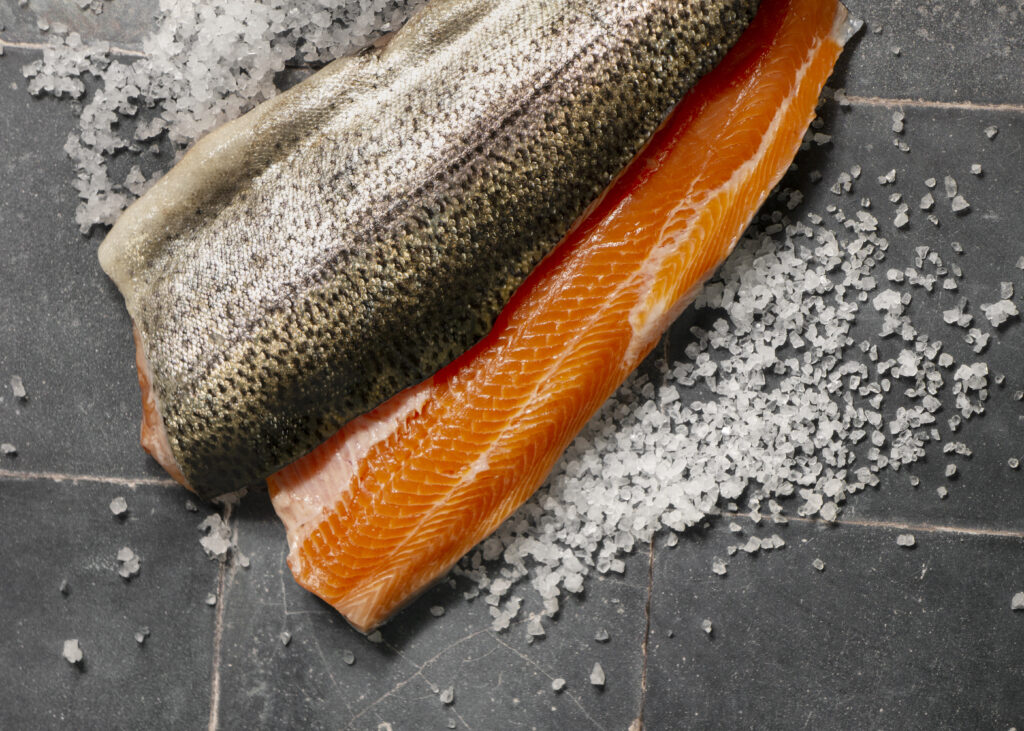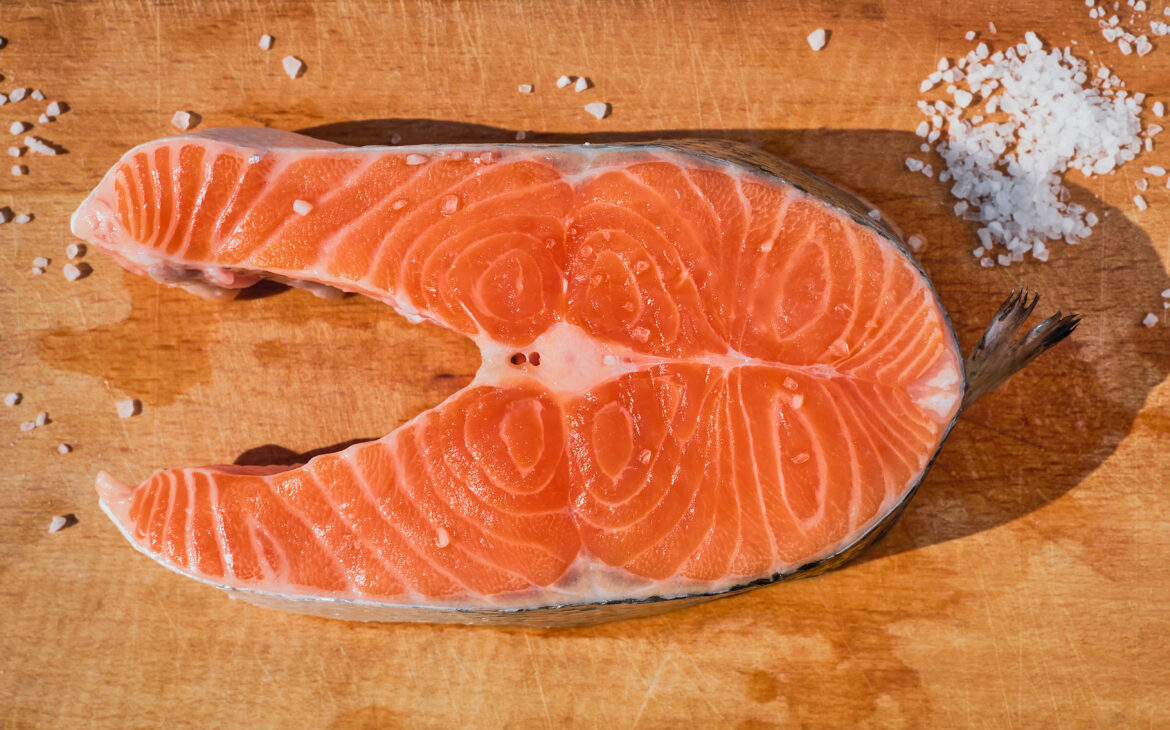Protein in Atlantic salmon offers a potent mix of high-quality amino acids and recovery-friendly fats that support muscle repair, immune resilience, and overall well-being. Whether you’re training hard, rebuilding after an illness, or aiming for steady health, Atlantic salmon delivers complete protein with excellent digestibility and a favorable nutrient profile that’s easy to incorporate into daily meals.
Why Recovery Matters
Recovery is where progress happens. After exercise or stress, your body needs amino acids to rebuild muscle fibers, restore enzymes, and balance immune function. Salmon stands out because its protein is complete and bioavailable, and it comes packaged with omega-3s (EPA and DHA) that can help modulate inflammation and support muscle function.
Quick Facts
Cooked Atlantic salmon provides roughly 22–25 g of protein per 100 g, with strong leucine content that helps trigger muscle protein synthesis. A typical 6 oz (170 g) cooked portion lands around 35–40 g of protein. It’s highly digestible, scoring near the top on modern amino-acid–based measures of protein quality. Per serving, salmon also supplies meaningful omega-3s, which may enhance anabolic sensitivity and support recovery from training.
What Makes It Stand Out
Salmon’s protein is “complete,” meaning it includes all essential amino acids, including leucine, isoleucine, and valine, which are central to muscle repair. The combination of high-quality protein and omega-3 fats is uncommon among whole foods. Research indicates omega-3s can improve the muscle’s response to protein, especially in older adults, making salmon a smart choice across age groups.
Latest Research
Sports nutrition literature highlights that hitting a per-meal leucine threshold (about 2–3 g) helps initiate muscle protein synthesis. Salmon contributes to that target when portions reach roughly 25–40 g of protein. Studies in older adults show omega-3 supplementation can enhance the anabolic response to amino acids and resistance training, suggesting a synergy between protein intake and EPA/DHA. Comparative research also finds animal proteins like salmon and chicken generally have higher digestibility and indispensable amino acid content than many single plant proteins, though well-planned plant combinations can close the gap. Evidence is strongest for salmon’s role in muscle recovery when total daily protein and energy needs are met and training is consistent.
How It Fuels Recovery
The amino acids in salmon repair damaged fibers and help build new contractile proteins after resistance or endurance exercise. Leucine acts as a key signal, turning on muscle-building pathways. Adequate protein also supports immune cells, which face higher demands during heavy training or illness. Salmon’s omega-3s may help control excessive inflammation, supporting joint comfort and functional recovery. The result is steadier progress, less soreness over time, and better readiness for the next session.
How Much to Eat
Your needs depend on body size, age, and training load. For general health, aim for 20–30 g of protein per meal, which you can meet with about 3–5 oz cooked salmon. Active adults and athletes often target 1.6–2.2 g of protein per kg body weight per day; salmon servings of 4–8 oz can help distribute that intake across meals. Older adults or those recovering from injury may benefit from 30–40 g of protein at a meal to overcome anabolic resistance—about 5–7 oz cooked salmon gets you there.
Best Timing
The “window” is wider than once thought, but practical timing still helps. Consuming 20–40 g of high-quality protein within about 2–3 hours after training supports muscle protein synthesis. Spreading protein evenly across breakfast, lunch, and dinner can improve results versus a single large dose. On recovery days, a protein-rich evening meal can support overnight remodeling.
Cooking That Protects Quality
Gentle heat preserves moisture and keeps protein digestible. Baking, poaching, steaming, or air-frying at moderate temperatures works well. Avoid overcooking; aim for opaque flesh that flakes easily but stays juicy. Season with citrus, herbs, garlic, pepper, and a light drizzle of olive oil. Proper handling—cold storage and cooking to safe doneness—maintains both quality and safety.
protein in atlantic salmon

Smart Pairings
Pair salmon with carbohydrates to replenish glycogen and accelerate recovery: rice, potatoes, quinoa, or whole-grain pasta all fit. Add colorful produce—leafy greens, peppers, berries—for antioxidants and polyphenols that support overall health. If you need a larger protein dose, complement with Greek yogurt sauce, eggs, or edamame on the side.
Simple Meals
For a 20–25 g target, try 3–4 oz baked salmon with quinoa and broccoli. For 30–40 g, go with 5–7 oz salmon over brown rice with a spinach salad. Quick post-workout options include a salmon rice bowl with avocado and citrus or a whole-grain wrap stuffed with flaked salmon, greens, and a yogurt-lemon dressing.
Comparisons That Matter
Compared with chicken breast, salmon has slightly less protein per ounce but brings a major advantage: marine omega-3s that support muscle function and cardiovascular health. Against tuna, Atlantic salmon provides strong omega-3 levels with generally lower concerns about mercury (though sourcing always matters). Versus plant proteins, salmon typically has higher digestibility and essential amino acid density; still, plant-forward eaters can combine legumes, grains, and soy to meet needs. Compared with whey, salmon digests more slowly, making it ideal for meals, while whey suits rapid post-workout or appetite-sensitive moments.
Sourcing And Sustainability
Farmed Atlantic salmon is widely available and can be rich in omega-3s, though feed practices influence levels. Wild-caught Atlantic salmon is limited; many “wild salmon” options are Pacific species. Look for reputable certifications and choose products with transparent feed and farming standards. Frozen fillets and canned salmon (including bone-in for calcium) are budget-friendly, convenient, and nutritious.
Common Mistakes
Don’t rely on salmon alone; mix protein sources to diversify nutrients and keep meals interesting. Don’t overcook—dry fish is less enjoyable and can reduce appetite at mealtime, making it harder to hit targets. Don’t ignore total daily protein and carbohydrate intake; muscle recovery depends on both amino acids and fuel. Hydration and electrolytes matter, too, especially in hot or long sessions.
FAQs
How much protein is in 100 g?
About 22–25 g when cooked. A typical 6 oz portion provides roughly 35–40 g.
Is it good for weight loss and recovery?
Yes—high satiety, quality protein, and omega-3s support fat loss while preserving lean mass.
Can you eat it daily?
Many people can, within a varied diet and mindful sourcing.
What’s the best time post-workout?
Within 2–3 hours, paired with carbs.
What about contaminants?
Choose trusted sources and rotate seafood varieties.
Key Takeaways
- Salmon delivers complete, highly digestible protein plus omega-3s that support recovery.
- Aim for 20–40 g of protein per meal; 3–7 oz cooked salmon usually fits the bill.
- Time protein evenly through the day and include carbs for glycogen repletion.
- Gentle cooking preserves quality; smart pairings enhance results.
- Choose reputable sources and vary proteins across the week.
Sources
- USDA FoodData Central for nutrient composition of Atlantic salmon.
- Position stands and reviews from sports nutrition and exercise physiology journals on protein distribution, leucine thresholds, and recovery.
- Peer-reviewed research on omega-3 (EPA/DHA) and anabolic sensitivity, inflammation, and muscle function in adults and older adults.
